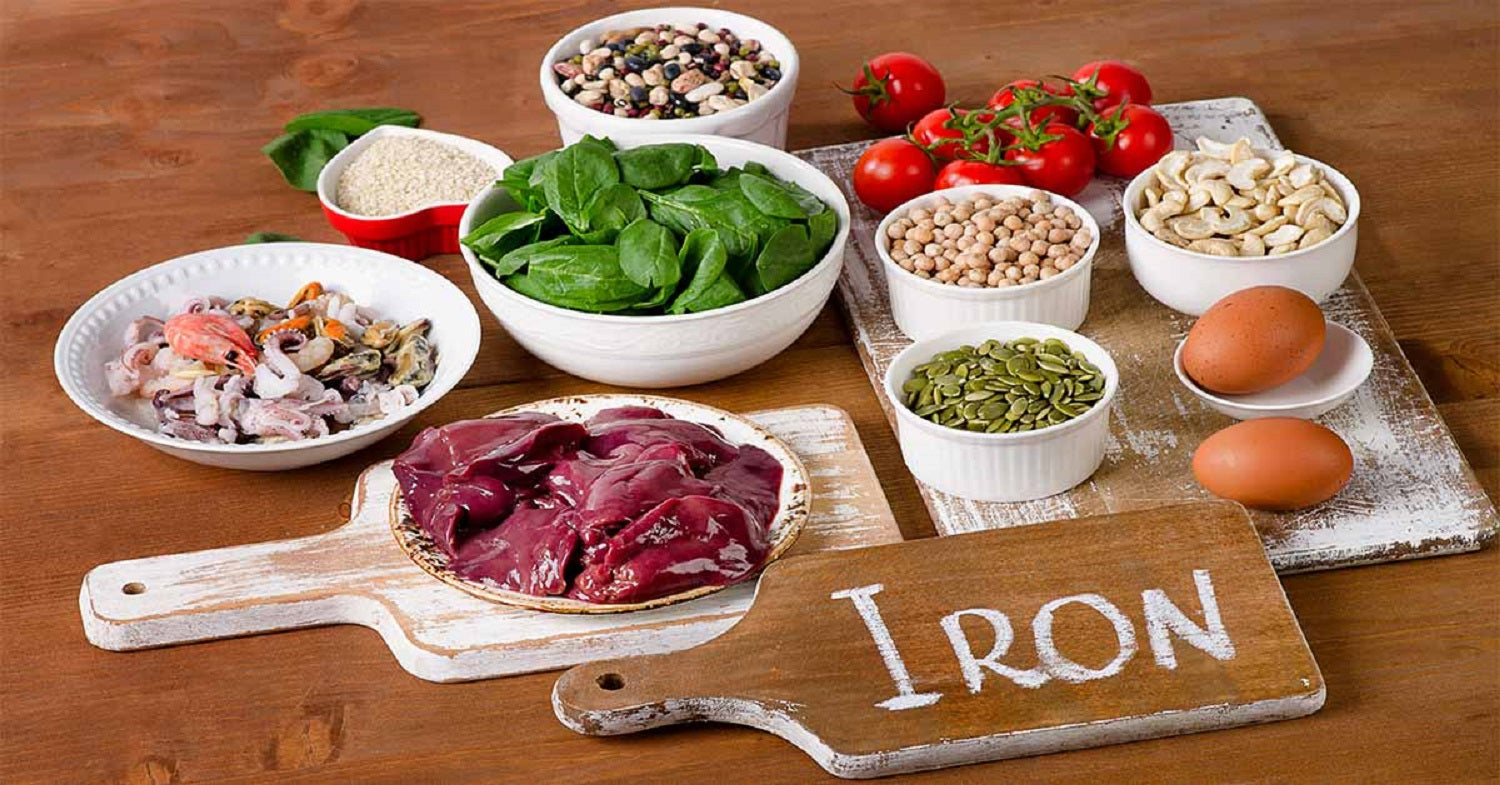Foods Rich in Iron & How to Get Them

Iron is a mineral that is the central component of red blood cells responsible for performing crucial functions. Ever wonder how the supply of oxygen is carried throughout the body? The human body uses iron to develop hemoglobin in the red blood cells to take and supply oxygen to every body part.
Moreover, it can significantly help in the growth of human beings because many proteins and enzymes use iron as their fundamental unit.
Iron allows for a healthy pregnancy, increases energy, and boosts athletic performance. It also increases strength and endurance indirectly by increasing the supply of oxygen.
Everybody has different Iron requirements, depending on their body type, age, gender, etc. To describe this, NIH USA (national institute of health) has provided a chart illustrating the optimum consumption of iron following the life stages.
Life Stage:
Recommended Amount:
- Birth to 6 months: 0.27 mg
- Infants 7–12 months: 11 mg
- Children 1–3 years: 7 mg
- Children 4–8 years: 10 mg
- Children 9–13 years: 8 mg
- Teens boys 14–18 years: 11 mg
- Teens girls 14–18 years: 15 mg
- Adult men 19–50 years: 8 mg
- Adult women 19–50 years: 18 mg
- Adults 51 years and older: 8 mg
- Pregnant teens: 27 mg
- Pregnant women: 27 mg
- Breastfeeding teens: 10 mg
- Breastfeeding women: 9 mg
Iron consumption is vital for the body to perform daily tasks. That you might question yourself, "Am I consuming enough iron"?
If the answer is no, then the following is a list of the top 3 Iron-rich foods which you might want to include in your daily diet to avoid its deficiency:
Shellfish (Clams)
Shellfish is an excellent source of iron and an elite and famous dish. It is popular among nations like Malaysia, Shri Lanka, Japan, etc. Many nutritionists and diet experts also claim that shellfish in the form of a clam has the highest source of iron compared to any other sort of food.
On top of that, Shellfishes contain heme iron, a type of iron that is proven to be highly absorbable by the body compared to non-heme iron, which is also known as a plant-based source of iron.
Although absorption isn't a problem with shellfish, the clams are proven to vary from one type to another. Hence, some of the clam types have significantly fewer amounts of iron.
Spinach
Spinach is a vegetarian source of iron. Another super-food is known for its high iron content.
One hundred grams of spinach has almost 2.7 mg of iron, and that's not shabby for a leafy source of iron. The best thing about spinach is that, unlike shellfish, you don't have to worry about the cost or availability because it is widely available in practically all regions of the world.
Although it is rich in iron, there might be better sources to consider when it comes to bioavailability. The reason is it contains Non-heme iron.
According to an American author Scrimshaw NS, only 2 percent of iron is absorbed by the intestine, and the rest goes to waste. The other side of the coin is that many health professionals have proclaimed this statement false as spinach has vitamin C, which helps in the better absorption of iron.
It seems that Popeye was right after all.
Legumes
Legume is a family which consists of beans, chickpeas, soybean, lentils, etc. Iron content in chickpeas precisely is the highest in all legume families, followed by lentils.
Nearly every legume is loaded with high iron content, which can quickly boost your iron intake. For instance, peanuts have 4.6 mg of iron in every 100 grams.
Regarding bioavailability, it is still lower than any non-vegetarian source of iron. The American journal of clinical nutrition reports that the bioavailability of iron in beans ranges from 0.81 to 1.91%. South Asian nations, including India, Myanmar, Sri Lanka, and Brazil, are significant producers of legumes.
To increase iron absorption, one should follow the advice given by a plethora of food scientists and health experts that are:
- Consume enough Vitamin C as it leads to better iron absorption.
- Consume citric juices like orange and lemon juice.
- Consuming items listed above simultaneously while eating iron-rich foods can maximize their absorption.
Although an individual must maintain healthy levels of this nutrient in the body, it doesn't mean that we do it in excess since excess of anything is wrong. You guys must know about the other way around nutrients as well.
The other way is that a higher level of iron produces harmful reactions in the body and could also interfere with metabolism, hampering organs like the heart and liver.
